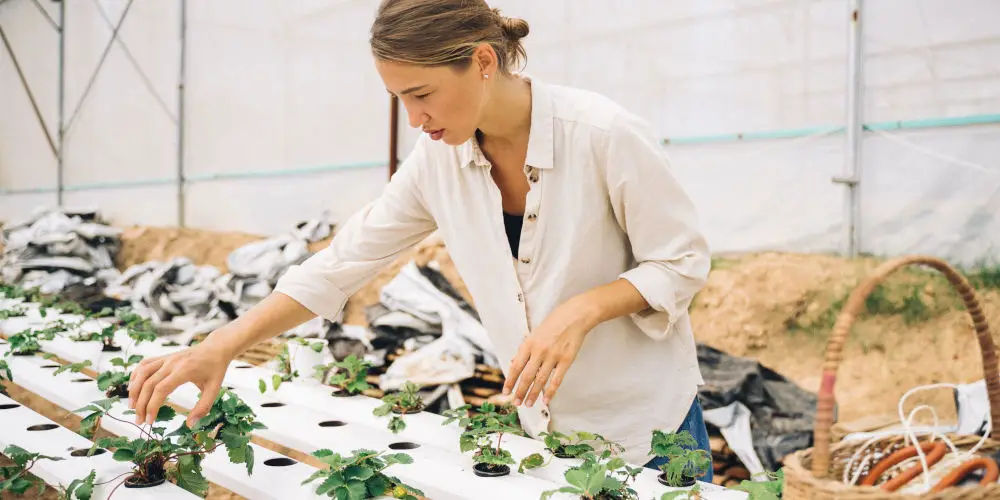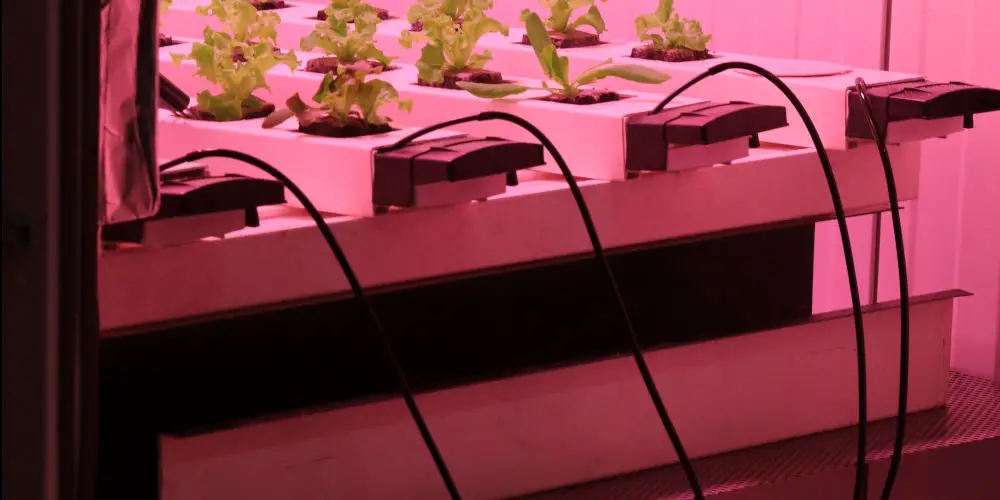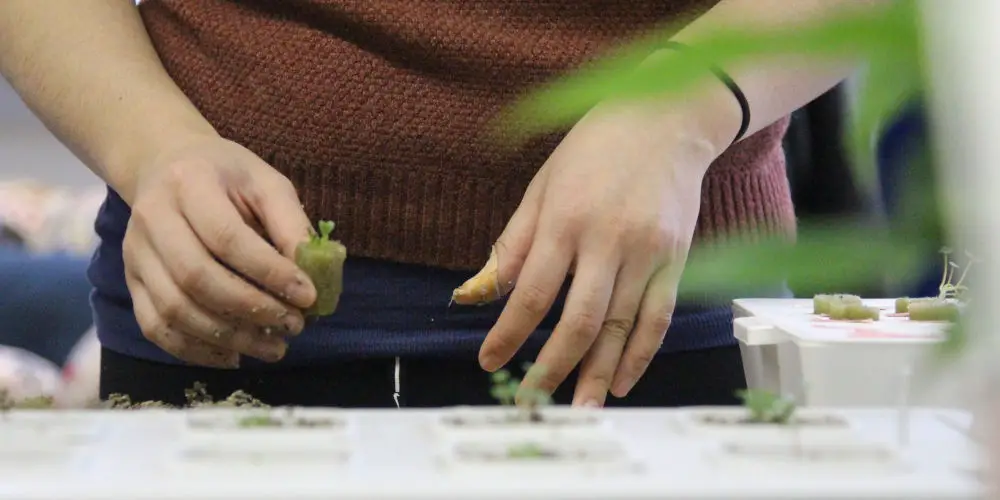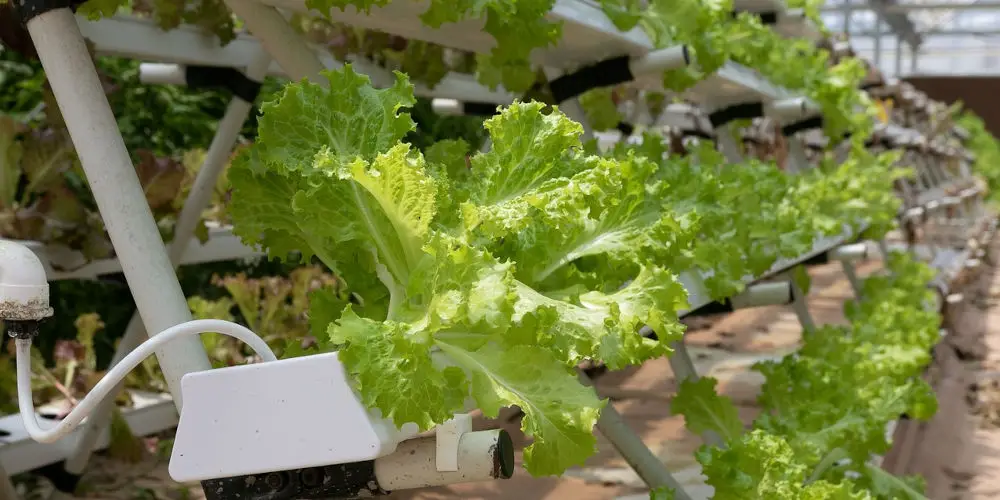How to start a hydroponics vegetable garden

In our ever eco-conscious world, more of us are growing our vegetables. Traditionally, you’d need a garden or an allotment, which isn’t always possible. But we can use hydroponics as it requires minimal space. Starting a hydroponics vegetable garden isn’t difficult or expensive.
If you’re new to hydroponic gardening, you can use this method to grow vegetables and plants anywhere, regardless of soil type, the size of your garden (or lack of one!), weather, and climate.
It’s ideal if you live in a location where it’s only possible to grow plants and vegetables for part of the year, as you can supplement your garden with hydroponic techniques, either for a few months or all of the year.
In this guide, you’ll learn how easy it is to start a hydroponics vegetable garden.
Why start a hydroponics vegetable garden in your home?
You might not realise, people have been using hydroponics for at least the last 500 years to grow plants without soil. As you don’t need dirt, this system is ideal for growing food literally anywhere.
There’s no need to have acres of land or the ideal soil, as hydroponics works with minimal space, cost, and resources. Another benefit of hydroponics is you’re not restricted by what your type of soil will allow you to grow. You can instead grow plants, vegetables, and more.
What are the benefits of hydroponic gardening?
No garden needed
As more and more of us live in cities, having a decent sized garden is a luxury few can afford. Many would love to be able to grow veg and plants but lack the space. Thankfully, hydroponics solves many of these issues as they use a tiny space indoors.
No Soil
If you lack soil or live in an area with poor soil quality, hydroponics will enable you to grow vegetables to feed your family and cut your food miles. It’s also a less messy way of gardening since you won’t be getting your hands dirty.
Grow all year
It’s impossible to grow food all year round in the UK in a garden. Hydroponics make it possible as the system doesn’t rely on soil, sun, or weather. As you set them indoors, you don’t need to worry about frost dates or hot spells or droughts.
Grow more
Hydroponic systems utilise resources more efficiently by design. They produce crops faster than a soil-based garden. And, as vegetables grow fast, you can plant more often too.
Speciality Crops
If you want to explore growing interesting plants and vegetables that don’t typically grow in our British climate, hydroponic can help. You can easily design a system that enables a specific speciality crop or crops.
When you want to swap crops, you can tweak your system to accommodate them without having to rebuild the entire thing. With a soil-based garden, this can be nearly impossible.
Uses Less Water
While hydroponic does use water, as it doesn’t soak into the soil and isn’t evaporated by the sun’s heat, the amount of water used is set and won’t vary by much. Plus, you can plan how much water you’ll need for each cycle.
Fewer Pests
One massive issue with growing vegetables in a garden is pests. Yes, there are numerous ways to deter them, but it’s still a constant battle.
As Hydroponic systems sit inside a house or greenhouse, you don’t have to worry about deer, mice, or raccoons stealing the crop. You also have fewer bug infestations and fewer diseases to deal with.

Six hydroponic systems we could use
Here are several systems we can use for our hydroponics vegetable garden. some are easy to build and maintain, others require a lot more effort.
Wick System
As the simplest method of growing hydroponically, you don’t need a fancy set-up. You can create a basic wick system with an emptied plastic litre bottle, some string, a growing medium, and seeds. There are no pumps or expensive equipment and no need for electricity.
With this method, a string or ‘wick’ is looped between a reservoir of nutrient-rich water and the plant. The wick soaks up the water and transfers it to the plant to feed the roots.
Use this hydroponics vegetable gardening system to grow greens, herbs, and vegetables that don’t fruit. Be aware that a wick system doesn’t provide enough nutrition for heavy feeding plants.
Drip System
You’ll find the drip system in use around the world. As the most common system, it’s fairly basic but does require electricity to run a submersible pump.
Tubing carries the solution between a water reservoir and the plants and is driven by the electric pump. A second pump aerates the water to provide oxygen to the roots.
The pumped water is recycled back to the reservoir and reused for weeks until the nutrients are depleted. At that time, the water and nutrients are refreshed, and the cycle continues.
The drip system is best for peppers, peas, radishes, squash, and beans. Also, large vegetables grow well with this method.
Deep Water Culture (DWC)
Another extremely popular hydroponic system is Deep Water Culture (DWC) due to its simplicity. Plants are set in net pots with a growing medium with their roots immersed in the water reservoir below.
No water pump is needed to move the nutrient solution to the plants as they sit in it continuously. An air pump is necessary to provide the roots with oxygen.
Ideal for lettuce, greens, radishes, kale, cabbage, and broccoli. Tall or heavy plants don’t do well in this hydroponic garden unless they have added support.
Ebb & Flow (also known as Flood and Drain)
In this system, the plants are arranged in a growing medium and, at timed intervals, are flooded with nutrient-rich water. The water drains back to the reservoir and is then pumped back on a schedule. To make this system work, it requires pumps, timers, and a specific design.
Plants grow faster using this system than with the Drip or DWC system, and it can produce a lot more. However, the set up cost is higher and it requires frequent and consistent supervision.
With this hydroponics vegetable garden system, you can easily grow tomatoes, cucumbers, peppers, eggplants, herbs, and other vegetables that require a lot of nutrients.
Nutrient Film Technique (NFT)
As a nutrient film technique (NFT) system relies on pumps and gravity to ensure the plants get what they need, it’s a little more complex to set up.
Place the vegetable plants in grow net pots, allowing their roots to dangle free. These pots sit in channels or gullies. Water is continuously pumped down the channels, providing nutrients to the roots.
The build requires attention to detail to allow the water flows correctly. It also requires pumps and frequent monitoring.
The NFT method is excellent for large operations growing strawberries, tomatoes, peppers, and herbs. There are better systems to start with and over time you can grow into needing an NFT system!
Aeroponics
Instead of being constantly immersed in water, the roots are exposed more to air. The water reservoir is below the roots, and a small sprinkler system in the tank mists the roots from below.
Thanks to this design, crops are ready to harvest faster and more abundantly. However, it requires constant monitoring and careful maintenance. If the sprinkler stops working, the roots will die quite quickly.
Aeroponic systems are excellent for growing lettuce and herbs.
It’s easy to understand how hydroponic gardens work
There are plenty of different systems for creating a hydroponics vegetable garden. In terms of the basic fundamentals, the plant’s roots get fed nutrient-enriched water and oxygen consistently. Each system provides these necessities differently.
Each method also uses a different technique for supporting the plants and for the water and oxygen to reach the roots.

What do you need to build a hydroponics vegetable garden?
What pieces you need depends on the method you’ll use. If you’re building your first hydroponics vegetable garden, we recommend starting with the wick, drip, or deep water culture methods as they are the easiest to construct.
And while the basic materials vary with each one, they aren’t difficult to buy or assemble. Let’s explore the exact equipment you need.
Hydroponics building blocks
As you research hydroponics, you’ll see loads of new and interesting terminology. That’s perfectly fine. However, there are a few things to know before starting any system.
Nutrients
Nutrients are the food the plants need to live. Typically, a mix of nitrogen, phosphorous, potassium, and dozens of other essential minerals. The nutrient mix makes up for the lack of soil, which is the usual food source.
You need to purchase specific hydroponic nutrients. There are plenty of options when buying the best type for specific plants. What mix you choose to use will depend on your system. You must use nutrient mixes specifically designed for hydroponic growing.
Hydroponic nutrients are available as premixed liquids or powders that require hand-mixing. These products are one of the regular costs of growing vegetables this way.
pH
The pH is the measure of acid or alkaline. When growing in soil, this number is important, too. Some plants prefer more acidic growing conditions, and others prefer the opposite.
Maintaining a constant pH figure is essential to ensure the plants receive an adequate and accurate amount of nutrients. As water is cycled and recycled, nutrients get used up, and the pH changes.
These changes mean the pH level needs testing and monitoring, sometimes daily, basis. There are test strips to do this or electronic devices.
Growing Mediums
Vastly different from soil, growing mediums don’t contain nutrients. Instead, they are chosen based on their ability to absorb water, provide stability, and support adequate drainage.
Some popular choices include coco coir, rock wool, clay pellets, sand, pine bark, vermiculite, and perlite. Usually, we’ll use a mix of these mediums.
Net Pots (Grow Baskets)
These are essentially small baskets with holes in them. You place the growing medium in the basket and arrange the seedling in the medium. The plant’s roots hang free as they grow, allowing them to receive the nutrient water solution.
Reservoir
The reservoir holds the water and nutrient solution mix. Storage totes, old glass aquariums, and nappy buckets are just a few of the common reservoirs people generally use in a hydroponics vegetable garden.
Grow Lights
While not necessary for all of the growing systems, grow lights are vital in some methods. Plants need nutrients, oxygen, and light to thrive. If you only have a few plants and have some bright window space available, that suffices just fine.
However, if you plan to build a larger system indoors in areas without windows or sufficient light, you’ll need artificial lighting.

Which hydroponic system is your best option?
When choosing the ideal hydroponic system for you, there are several things to consider. It largely depends on your situation and what you want to grow. We advise you to start with the simplest method as you’ll learn the basics.
You don’t want to invest loads of money into a more intricate system only to learn you lack the time, energy, or prolonged interest to grow with a hydroponic garden.
It’s best to start with the wick system. Use that method to grow a few plants over several months. You can then decide what’s the next best step for you.
Setting up an easy and cost-effective wick hydroponics vegetable garden
A wick hydroponic system is the easiest, doesn’t require any pumps or electricity. It’s even an excellent project to do with the kids! After doing some research on YouTube, we found this simple DIY system. It reuses a 2-litre soft drinks bottle to grow vegetables hydroponically.
With one plant per plastic bottle, it’s ideal for growing a plentiful crop of vegetables and plants. Plus, this system costs under £20 to set up and get working.
Setting up an easy drip hydroponic system
Setting up a drip system is simple with this tutorial. As an adaptable method, you can easily tailor the system to how much you’d like to grow. It can be a small set-up with one plant, a few plants, or a much larger growing system.
To get started, you need a large bucket, a pump, and some tubing. All of which are cheap and widely available. The system is quite simple to build. If you’d prefer to grow larger or heavier plants, like tomatoes or squash, use this hydroponic system.
How to set up an easy deep water culture system
Another excellent place to start is with this easy deep water culture system (DWC). You’ll need a glass aquarium for this method. Next, you need to create a Styrofoam “raft” to hold the plants. The raft is then placed in the aquarium. Next, fill it with water and the nutrient solution.
As Styrofoam isn’t heavy-duty, it is best to only grow lightweight vegetables with this system, like lettuce, beans, and radishes.
Another option is the Kratky Method, which is an adaptation of the deep water culture system. It’s revolutionary because it is passive. So you don’t need pumps or electricity.
The system is set up like the DWC. However, instead of keeping the roots immersed and providing oxygen through a pump, the water evaporates over time, leaving the roots exposed.
Ideally, the plants will be fully grown before changing the nutrient water. However, this type of hydroponics vegetable garden only works for fast-growing plants.
It’s a beautiful and simple solution for growing lettuce and greens regularly. Individual lettuce, spinach, or herb plants will also grow in mason jars using the Kratky Method.
Another fun adaptation of the DWC method is using old soft drink bottles to create a vertical window garden of lettuce and herbs. It’s a great way to repurpose old plastic bottles and is inexpensive and easy to create.




